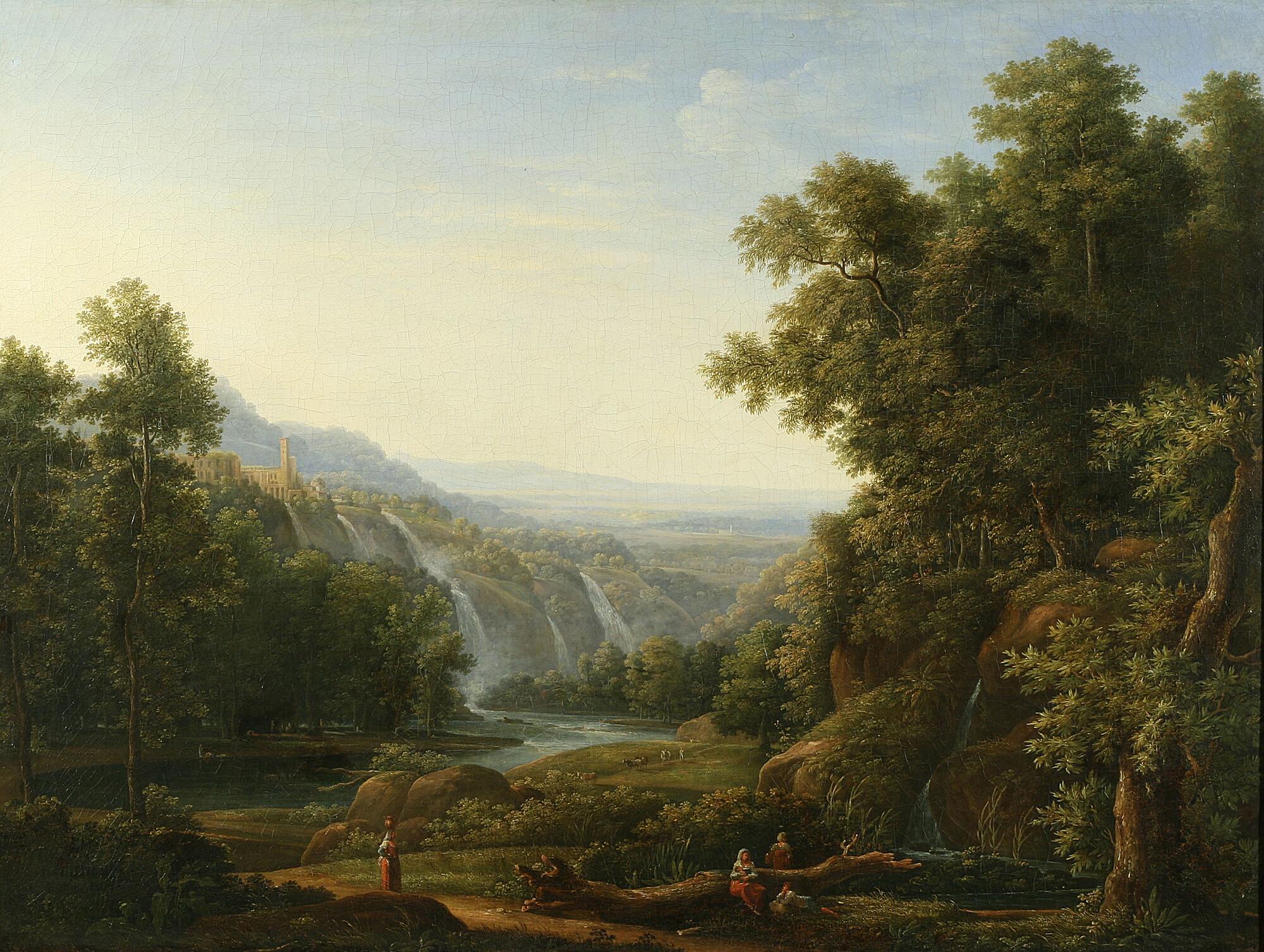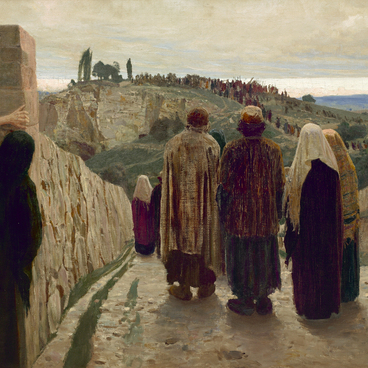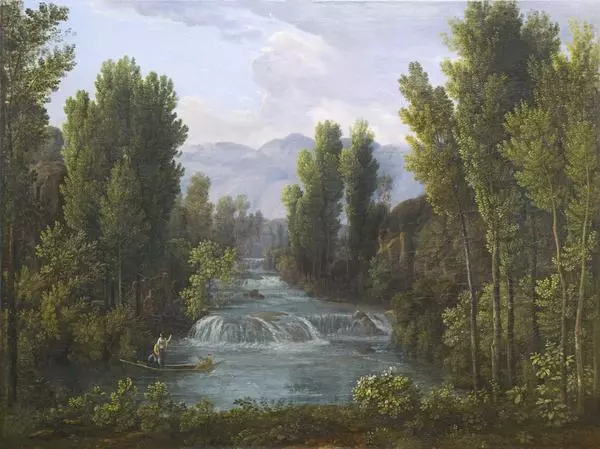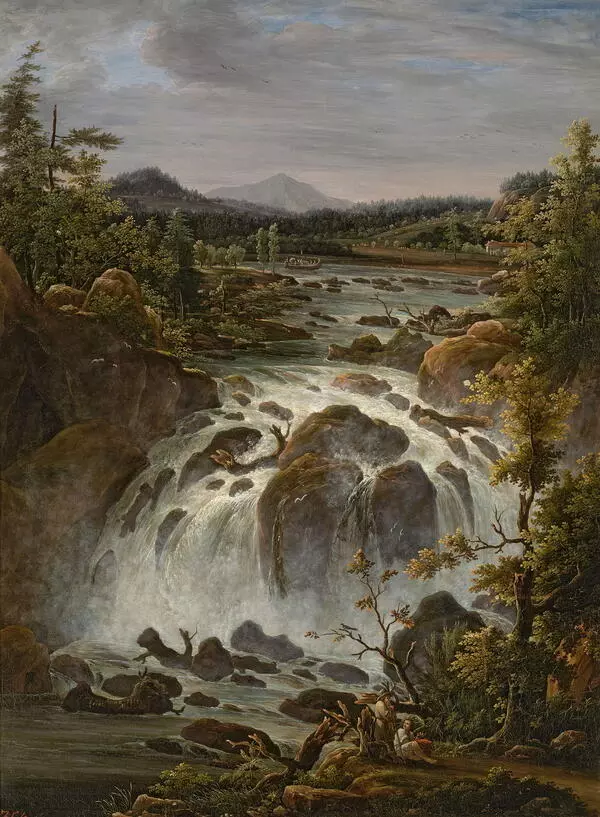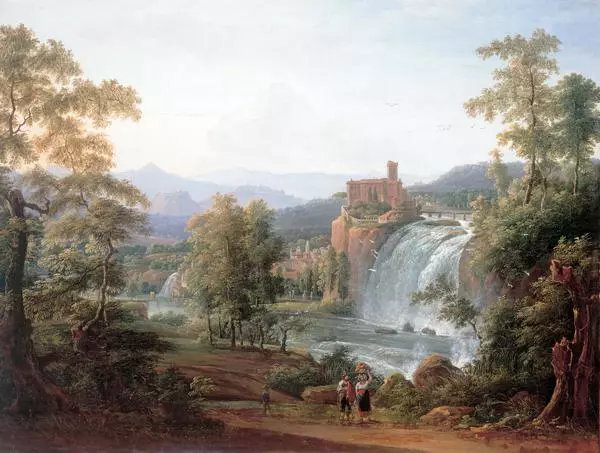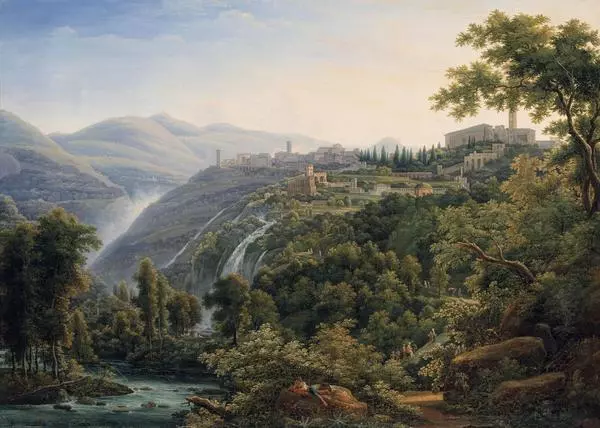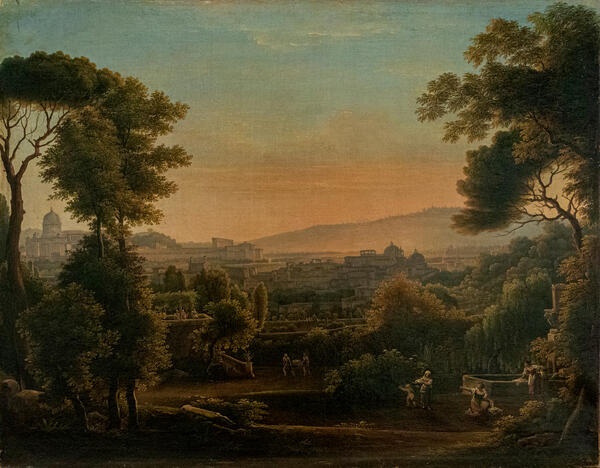The emergence of the landscape genre in Russia is associated with the 18th century and the foundation of the Imperial Art Academy in Saint Petersburg in 1757. The teaching of painting was based on European traditions: the French Academy of Arts and its ‘hierarchy of genres’ were taken as a model. Historical and multi-figure painting belonged to the high genres, subject painting to the lower ones. Portraits and landscapes were in the middle of the list.
However, not all students gravitated towards the high genre. Fyodor Matveyev is one of the brightest landscape painters of the era of classicism. From the age of six, the boy began to paint at the Educational School at the Imperial Art Academy. He continued his studies in the landscape class under the guidance of Semyon Shchedrin, the uncle of the famous artist Sylvester Shchedrin. The artist’s talent was awarded a large gold medal, which he received after graduating from the Academy. Matveyev was awarded a scholarship trip to Italy.
In Italy, Fyodor Matveyev’s landscape skills were fully revealed. The centerpiece of the museum collection is his work ‘The Waterfalls in Tivoli near Rome’. It is a typical classic landscape inspired by the living Italian nature. The notion of a ‘classicist landscape’ first appeared in France thanks to such masters of the 17th century as Nicolas Poussin and Claude Lorrain. This work is certainly based on French examples. The landscape is conventionally divided into three planes. Each of them is spelled out according to its own canons. In the foreground, artists traditionally placed large objects: a tree, a road or a lake, and several figures of people. The middle shot reveals the landscape: it is the most occupied with objects. And, finally, the distant plan is the endless sky and the blurred, as if in a haze, horizon line. Matveyev’s work is done in this way. The unhurried action unfolds in the foreground, taking up very little space. Harmonious and majestic nature rules over everything. The classic landscape was intended to celebrate the beauty of the surrounding world and evoke a sense of harmony.
However, the landscapes of Fyodor Matveyev have a rare merit: for all their ideality, they do not turn into a scheme, they have a living feeling. According to his contemporaries, Matveyev adored nature so much that he worked on it all day long, often forgetting about food. In this work, the gravitation to reality is obvious, in its color, not abstract and frozen, but alive and vivid.
Matveev lived in Italy for forty-seven years. At first, he was prevented from returning to Russia by a sense of freedom of creativity, which was not at home. Then constantly growing debts interfered. In 1819 alone, the Academy granted him a pension of 500 thalers a year. Matveyev died in Italy at an advanced age.
However, not all students gravitated towards the high genre. Fyodor Matveyev is one of the brightest landscape painters of the era of classicism. From the age of six, the boy began to paint at the Educational School at the Imperial Art Academy. He continued his studies in the landscape class under the guidance of Semyon Shchedrin, the uncle of the famous artist Sylvester Shchedrin. The artist’s talent was awarded a large gold medal, which he received after graduating from the Academy. Matveyev was awarded a scholarship trip to Italy.
In Italy, Fyodor Matveyev’s landscape skills were fully revealed. The centerpiece of the museum collection is his work ‘The Waterfalls in Tivoli near Rome’. It is a typical classic landscape inspired by the living Italian nature. The notion of a ‘classicist landscape’ first appeared in France thanks to such masters of the 17th century as Nicolas Poussin and Claude Lorrain. This work is certainly based on French examples. The landscape is conventionally divided into three planes. Each of them is spelled out according to its own canons. In the foreground, artists traditionally placed large objects: a tree, a road or a lake, and several figures of people. The middle shot reveals the landscape: it is the most occupied with objects. And, finally, the distant plan is the endless sky and the blurred, as if in a haze, horizon line. Matveyev’s work is done in this way. The unhurried action unfolds in the foreground, taking up very little space. Harmonious and majestic nature rules over everything. The classic landscape was intended to celebrate the beauty of the surrounding world and evoke a sense of harmony.
However, the landscapes of Fyodor Matveyev have a rare merit: for all their ideality, they do not turn into a scheme, they have a living feeling. According to his contemporaries, Matveyev adored nature so much that he worked on it all day long, often forgetting about food. In this work, the gravitation to reality is obvious, in its color, not abstract and frozen, but alive and vivid.
Matveev lived in Italy for forty-seven years. At first, he was prevented from returning to Russia by a sense of freedom of creativity, which was not at home. Then constantly growing debts interfered. In 1819 alone, the Academy granted him a pension of 500 thalers a year. Matveyev died in Italy at an advanced age.
